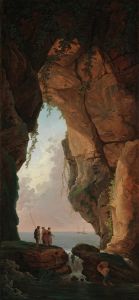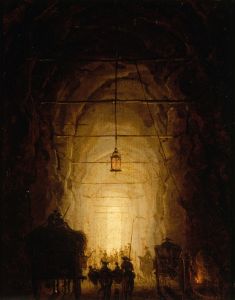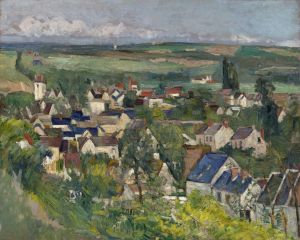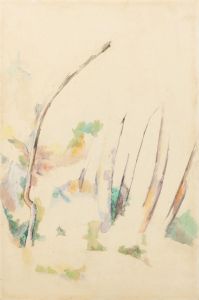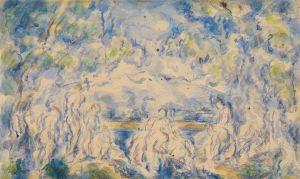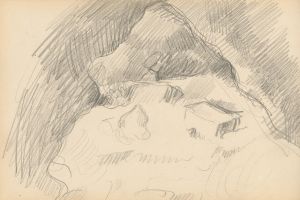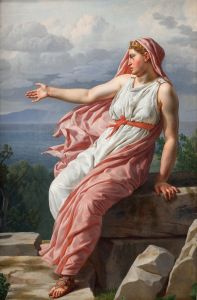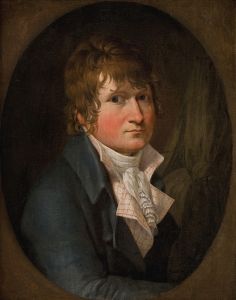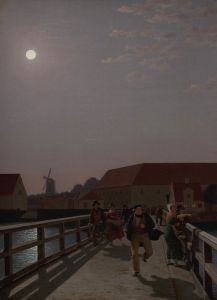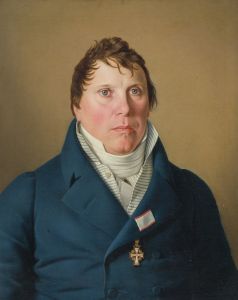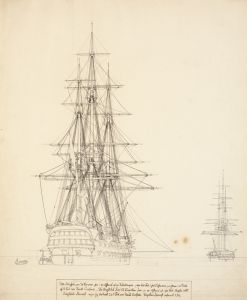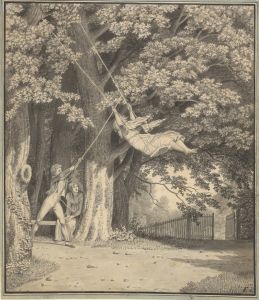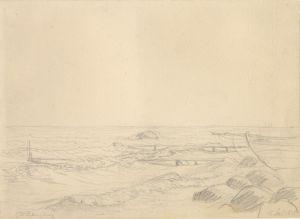
Måneskin over en vej Illustration til Linearperspectiven , Tavle IV
A hand-painted replica of Christoffer Wilhelm Eckersberg’s masterpiece Måneskin over en vej Illustration til Linearperspectiven , Tavle IV, meticulously crafted by professional artists to capture the true essence of the original. Each piece is created with museum-quality canvas and rare mineral pigments, carefully painted by experienced artists with delicate brushstrokes and rich, layered colors to perfectly recreate the texture of the original artwork. Unlike machine-printed reproductions, this hand-painted version brings the painting to life, infused with the artist’s emotions and skill in every stroke. Whether for personal collection or home decoration, it instantly elevates the artistic atmosphere of any space.
Christoffer Wilhelm Eckersberg, often referred to as the father of Danish painting, was a pivotal figure in the development of Danish art in the 19th century. He was instrumental in introducing the principles of linear perspective to Danish artists, which he had mastered during his studies in Paris and Rome. One of his notable works that exemplifies his expertise in this area is "Måneskin over en vej Illustration til Linearperspectiven, Tavle IV" (Moonlight over a Road, Illustration for Linear Perspective, Plate IV).
Eckersberg was born in 1783 in Blåkrog, Denmark, and he studied at the Royal Danish Academy of Fine Arts in Copenhagen. His education continued in Paris under the tutelage of Jacques-Louis David, a leading French neoclassical painter. This experience profoundly influenced Eckersberg's style, particularly his emphasis on clarity, precision, and the use of perspective.
"Måneskin over en vej Illustration til Linearperspectiven, Tavle IV" is part of a series of works that Eckersberg created to demonstrate the principles of linear perspective. Linear perspective is a mathematical system used to create the illusion of depth and volume on a flat surface. It involves the use of a vanishing point on the horizon line, where parallel lines appear to converge, giving the impression of distance and three-dimensionality.
In this particular illustration, Eckersberg employs the technique to depict a serene night scene illuminated by moonlight. The composition features a road that recedes into the distance, flanked by trees that guide the viewer's eye towards the vanishing point. The moonlight casts gentle shadows and highlights the textures of the landscape, showcasing Eckersberg's skill in rendering light and atmosphere.
Eckersberg's dedication to teaching and his role as a professor at the Royal Danish Academy of Fine Arts allowed him to pass on his knowledge of perspective to a new generation of Danish artists. His influence is evident in the works of his students, who included notable painters such as Wilhelm Bendz and Christen Købke. These artists, along with Eckersberg, played a significant role in the Danish Golden Age of painting, a period marked by a focus on realism, attention to detail, and the exploration of everyday life and landscapes.
The significance of "Måneskin over en vej Illustration til Linearperspectiven, Tavle IV" lies not only in its artistic merit but also in its educational value. It serves as a practical example of how linear perspective can be applied to create a realistic and harmonious composition. Eckersberg's contributions to art education and his emphasis on perspective have left a lasting legacy, influencing both his contemporaries and future generations of artists.
Overall, Christoffer Wilhelm Eckersberg's work in linear perspective, as exemplified by this illustration, highlights his commitment to precision and his impact on the development of Danish art. His teachings and artworks continue to be studied and admired for their technical excellence and their role in shaping the course of art history in Denmark.






